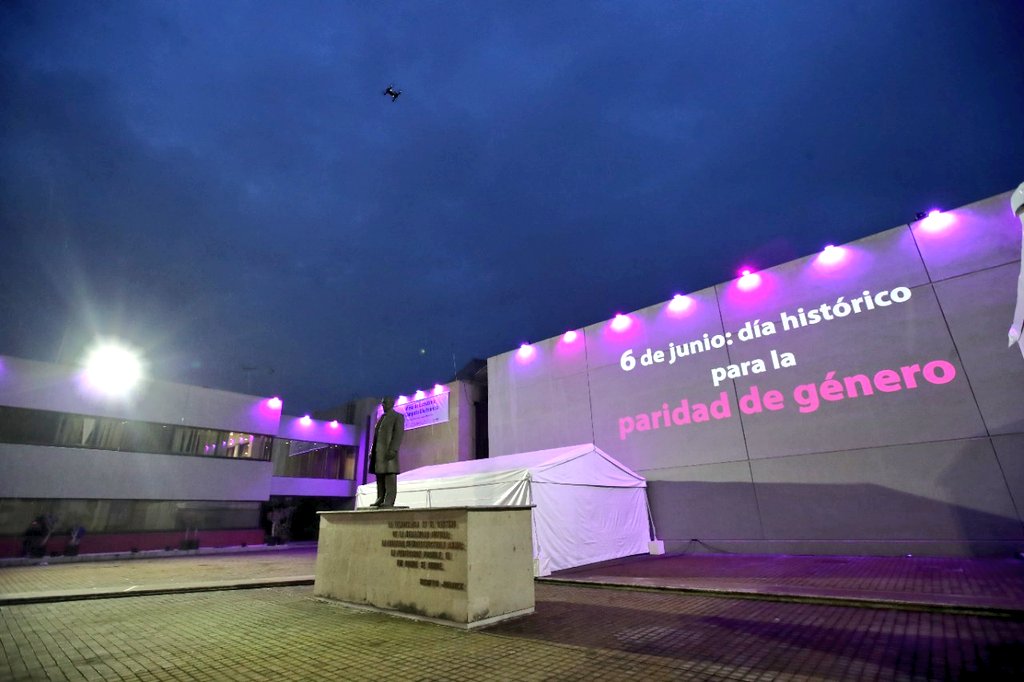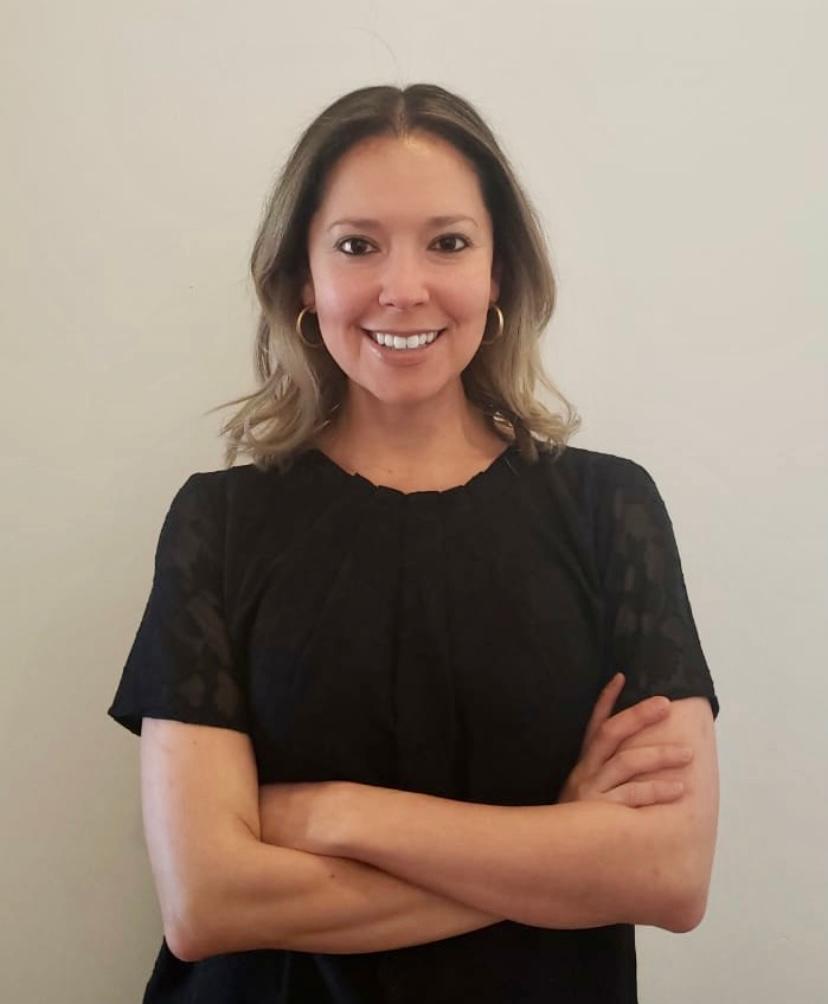“Women are not going to organically ‘just advance themselves’—we don’t live in societies where that happens. Setting up rules is important. … Rules can guarantee that women are able to exercise their rights like anyone else. Rules do make a difference.”
—Georgina De La Fuente, member of Instituto Nacional Electoral (INE), México

Mexico held its largest-ever election in June. In addition to the scale and the background of COVID-19, this was a historic election for one more reason: Out of 15 states that were electing a governor, six look set to get a woman in the position. That’s remarkable, given that thus far, Mexico has had only seven women governors since 1953.
It’s not just the office of governor where progress on representation has been made.
In 1991, there were only 21 women elected to the Chamber of Deputies—the lower house of the national Congress—and two women to the Senate—the upper house. By 2018, the country had achieved parity at the national level.
How did the country manage this feat?
To understand this better, I spoke with Georgina De la Fuente, senior advisor at Instituto Nacional Electoral (INE), the country’s electoral management authority, who shared the range of reforms brought in to ensure equal participation and representation of women in politics. The INE has played its part, but this remarkable progress has been possible because of the grassroots work of feminist organizations, push for reform from women in politics, and legislative reforms, says De la Fuente.

“This really is collective work: from committed leadership, political parties that are integrated in the decision making, legislative action, and feminist groups and women legislators pushing for legislative action. In general, electoral management bodies, and the conviction of their leadership have a decisive role in implementing changes that will favor women, but there is no substitute for legislative action,” said De la Fuente.
Akshi Chawla: How was the experience of the recent election in Mexico? Could you share some highlights about the participation of women in the electoral process, and their representation in Mexican politics?
Georgina De la Fuente: It was the largest election in Mexican history in terms of the number of positions up for grabs, including the 500 members of our lower house of Congress, and 21,000 positions at the local level. But this election was also remarkable because of the various novelties in terms of the participation of women and of other disadvantaged groups.
For the first time, we established a rule for gender parity at the gubernatorial level. Fifteen states across the country were electing governors, and INE mandated that parties register at least seven female candidates. Consequently, we had a record 53 women running for governors, alongside nearly 70,000 women running for other local posts, making up 51 percent of all candidates running for local office.
Six women were elected to head their states, which is quite remarkable, because we have only had seven women governors in our entire history. So, this is very good news, and a huge step forward.
At the federal level, we had over 1,800 women running for a seat in the Chamber of Deputies, making up almost 54 percent of all candidates, a record number.
Additionally, we also enacted affirmative actions in favor of other traditionally disadvantaged and underrepresented groups—namely, Indigenous peoples, people of African descent, people with disabilities, LGBTQI+ persons, migrants—with gender parity cutting across them all. We had nearly 900 candidates running who identified as part of these communities, of which 62 percent were women, making this the most diverse and inclusive electoral process in our history.
We’re still waiting for the final numbers—we have a very complex formula of assigning seats—but we can expect at least 49 percent of women making it to the lower house of Congress. That’s definitely good news!
“Fifteen states across the country were electing governors, and INE mandated that parties register at least seven female candidates. Consequently, we had a record 57 women running for governors, alongside nearly 70,000 women running for other local posts, making up 51 percent of all candidates running for local office.”
Chawla: What are some steps that helped Mexico reach this place of parity in its politics?
De la Fuente: Mexico transitioned from a system of quotas in the early 2000s into gender parity in 2014 as a result of a constitutional reform that obligates political parties to register candidate lists with gender parity, and also prohibits them from sending female candidates from districts where the party is likely to lose.
Additionally, the reform mandates that parties alternate candidates by gender from top to bottom of lists of proportional representation, ensuring “vertical parity.” This ensures that political parties wouldn’t cover the requirement of 50 percent by placing women on the bottom spots of their lists.
These new rules have guaranteed that a lot more women are elected to public office across levels.
After our 2015 midterm election, the first election where these rules came into play, we learnt that parity on candidate lists does not necessarily lead to parity among those elected. In that election, approximately 38 percent women were elected, which was still quite low. Therefore, INE decided to implement additional affirmative actions.
This year, we had more women register as candidates (even beyond the mandated 50 percent), and that would eventually result in more women actually getting elected.
“This year, we had more women register as candidates (even beyond the mandated 50 percent), and that would eventually result in more women actually getting elected.”
Chawla: All this sounds remarkable, especially because most of this has happened only in the last couple of decades. Could you share the role that the election management authority (INE) has played in pushing for parity in politics?
De la Fuente: INE has played a key role in ensuring the effective exercise of citizens’ and particularly women’s political and electoral rights. But this wouldn’t even be possible without legislative action in the matter, I believe.
INE can only operate within an established legal framework, right? And every one of its decisions can be challenged at the electoral court, either by citizens or by a political party.
As more and more women have gained access to decision making positions and seats in Congress, they have also been able to gather the necessary support from their male counterparts to pass legislation that addresses the historical underrepresentation of women. The outgoing legislature, for instance, is made up of 48 percent women in the lower house and 49 percent women in the Senate. And it was this Congress that passed the law which is known as “Parity In Everything.”
This law mandates gender parity in all three branches of government at all levels—the municipal, local and federal level, and also in different institutions and independent bodies in public administration. For instance, at INE our top decision-making body is made up of 11 members—six men and five women.
As more women have gained seats at the table, they have been able to push for this, and it’s been them, and the feminist movements, and other NGOs and activists that have pushed for all these reforms across time. In 2020, they were able to gain support of their male colleagues to pass legal reform on violence against women in politics. They argued that formal representation is only effective to the point of increasing the number of seats held by women. But this does not address the attacks, the abuse, the unequal conditions in which women compete. This reform recognizes political violence against women for reasons of gender as an offense, and it includes harassment, assault in person or online, and even in the media.
Seeing all these changes at the legislative level, at INE, we began implementing changes to guard our legislation. For instance, after the constitutional reform in 2014, we set up a gender equality and non-discrimination unit to help us implement all these changes, not only in the electoral process, but within the institutions as well.
¡Gracias vecinxs! #Elecciones2021MX pic.twitter.com/XvIKyS43UN
— Georgina Dela Fuente (@ginadelafuente) June 6, 2021
Chawla: Based on your experience in Mexico, what kind of roles would you suggest election commissions should play in improving parity in politics around the world?
De la Fuente: In general, what election commissions can do is build networks and communities with civil society groups and feminist groups, and also with experts and academic institutions, and build a community where all players are involved in the electoral process. That is key in creating and building the trust needed to implement all these changes that generally generate so much resistance. INE has been a space where academic institutions, civil society have come together, and that has been key.
But nothing really replaces legislative action. What INE has effectively done is materialize the legislative advances, which have been victories of feminist groups and women.
For example, we have a rule that prohibits parties from sending women to losing districts as candidates—but the law only goes so far, right? What we have effectively done is develop methodologies and models that help us verify compliance and create systems that can discourage or prohibit parties from not complying.
Or, for instance, the latest reform on violence against women in politics established that parties cannot discriminate against women in the use of their resources and public funding. We have designed and implemented methodologies to help us apply the law effectively to oversee compliance in a way that is fair to all players.
Obviously, this wouldn’t be possible without the firm commitment of our leadership, and of course, our female members. Additionally, political parties are part of the decision-making process at INE—they sit at every table where decisions are made. They don’t have a vote but they have a say in all that is discussed.
So, we have commitment at the top, we have transparency at every step of the way, in every single decision. In general, electoral commissions or electoral management bodies, and the conviction of their leadership, have a decisive role in implementing changes that will favor women.
But there is no substitute for legislative action, and that’s a key element that we cannot neglect.
“INE has been a space where academic institutions, civil society have come together, and that has been key. But nothing really replaces legislative action. What INE has effectively done is materialize the legislative advances, which have been victories of feminist groups and women.”
Chawla: When parity is achieved through quotas and other reforms, as it has in Mexico, what are some challenges that emerge? Have you noticed any resistance and backlash? What can be done to mitigate these?
De la Fuente: Any change that challenges preconceived notions about gender doesn’t go by without resistance, particularly from political parties. In fact, there are very few decisions by INE that have not been challenged at the electoral court. This is quite natural: political parties will seldom agree without at least a little resistance to regulations regarding the way they operate and make decisions. They don’t want to be told what to do.
What has been most alarming is the increase in violence against women as more of them take office. This past election cycle, we know of at least 21 female candidates killed during the campaign, mostly at the local level. There’s also sexism, insults, discrimination, threats, physical violence—perpetrated by male candidates, by the media, even by citizens, particularly through social media.
While the Electoral Commission cannot do the job of law enforcement, we can set up mechanisms so that women can file complaints. And we can either address them directly, or set up cautionary measures until the responsible institution takes up the case and investigates, and issues a ruling. It is important that we also follow up on every single complaint, even if we don’t have the legal authority to address them. And that’s what we do.
Our plenary sessions are public with all the political parties present. Transparency is key: from making these complaints public, to addressing them in public and following up on them in public.
We’ve also made efforts in terms of communication about what women can do if they are subjected to different types of violence. We have a hotline—our complaints committee is practically in permanent session during campaigns addressing these issues. We’ve set up close partnerships with social media companies to help us spread the word on the tools available to female candidates, and also to monitor content that can adversely affect and threaten women’s participation in the political process.
We also provide training and information on these issues to women within political parties. We work with media networks to develop recommendations for covering electoral campaigns in a way that is free of discrimination and sexism so that they do not reproduce gender stereotypes and violence against women.
Certainly, it is very difficult to change attitudes against women in politics, but there are tools available to electoral management bodies to address these issues, and to develop partnerships with different stakeholders that can help in ultimately mitigating these threats faced by women on the campaign trail.
Chawla: What is your key takeaway from the entire process, or rather, what is it that one can learn from the Mexican experience when it comes to improving women’s representation in politics?
De la Fuente: I think this idea that “rules matter.” Women are not going to organically “just advance themselves”—we don’t live in societies where that happens. Setting up rules is important. Rules do matter. Rules can guarantee that women are able to exercise their rights like anyone else. Rules do make a difference.
Up next:





